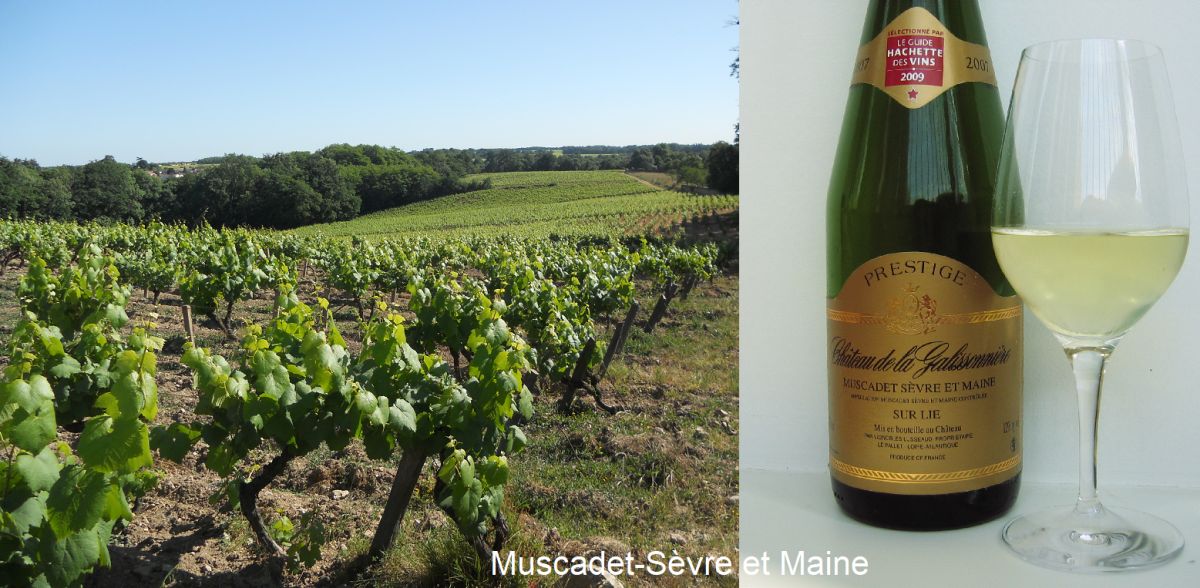Results
2,284 Results
Loading more Results ...
Loading more Results ...
| Muscadet AOC |
Description to Muscadet AOC
The appellation is located in the Loire wine-growing region at the end of the Loire Valley in the west of France on the coast to the Atlantic Ocean southeast of the city of Nantes. It belongs to the Pays Nantais area. The ancient wine-growing tradition in this region is attested to by a decree of the Roman Emperor Probus (232-282). In the past, red wine varieties were also cultivated here, but the extreme frost of 1709 put an end to this. The Melon de Bourgogne variety, which had already been introduced in the 16th century, developed into a monoculture. It became particularly popular with the Dutch, who were involved in wine-growing and distilled brandy from the wine and marketed it in northern Europe. The name Muscadet, which is commonly used here, eventually gave its name to the area, which was already classified in 1937. The hilly vineyards cover some 13,000 hectares of vines in 54 communes spread across the Loire-Atlantique département. The area is divided into four sub-appellations:
Muscadet
This area covers 3,400 hectares; the simpler qualities grow here.
Muscadet-Coteaux de la Loire (until October 1995 Muscadet des Coteaux de la Loire).
This area is located in the north to the left and right of the Loire and comprises 200 hectares.
Muscadet-Côtes de Grand Lieu
The area lies in the southwest and comprises 300 hectares to the left of the Loire around the Lac de Grand-Lieu, which gives it its name.
Muscadet-Sèvre et Maine (until 1995 Muscadet de Sèvre et Maine)
Named after two small rivers, this is by far the largest area and covers around 9,000 hectares on the left bank of the Loire. Here, the best wines grow on clay soils (Vallet), as well as slate and granite slopes (St-Fiacre). The production accounts for 80%.

Winemaking
The wine is called the "white answer to Burgundy's Beaujolais". The only grape variety allowed is Melon de Bourgogne. From the 1990s onwards, experiments were made with skin contact and barrel fermentation. Before fermentation, the natural sugar content of the must must be at least 144 g/l, which corresponds to 9% alcohol by volume. If enrichment takes place in bad years, the maximum alcohol content may be 12%. The white wines produced normally (without yeast storage) can also be marketed as Nouveau (Primeur) as early as the third Thursday of November after the harvest.
sur lie
In order to be allowed to indicate the designation "sur lie" (matured on the lees ) on the label, the wine must remain in contact with the lees in the fermentation tank after fermentation until at least 1 March of the year following the harvest (see under lees storage). This is reserved for the three higher appellations. This gives the wines a fresh and tangy taste due to the carbonic acid. Another prerequisite is lower yields. Bottling takes place immediately after racking, without clarification or filtration. For even fuller-bodied wines, storage takes place until 30 November.
Producers
Domaine de Beauregard, Domaine Bouffard, Domaine du Bois Bruley, Domaine de la Chambaudière, Château de la Chauvinière, Domaine Bruno Cormerais, Domaine Michel David, Donatien-Bahuaud, Domaine de l'Ecu, Domaine de l'Errière, Château de la Ferté, Domaine Gadais Père et Fils, Gauthier, Domaine Guindon, Domaine de la Haute Févrie, Domaine du Haut Fresne, Domaine Landes des Chaboissières, Martin Luneau, Marquis de Golaine, Chateau de la Preuille, Sauvion, Domaine du Paradis.
Vineyard: Jameson Fink, CC by 2.0 - edited by Norbert Tischelmayer
Bottle: By Tomas er - Own work, CC BY-SA 3.0, Link
More information in the magazine
- "We stand only for ourselves" How Crémant de Loire emancipates itself from Champagne
- The Loire Cornucopia in the heart of France
- Anne Claude Leflaive et Claude Pichard Clau de Nell 2004, Cabernet Franc, Vignes en Biodynamie, Loire, France
- Domaine Plouzeau Château de la Bonnelière 2009, Chinon, Loire, France
- Where châteaux stand Loire
- The Loire A river for connoisseurs
- Plaimont - The vine rescuers from south-west France Advertisement
- Good Bordeaux doesn't have to be expensive! Crus Bourgeois
- Paradisiacal times! Tasting: European sparkling wines for the festive season
- Liv-ex classification: The fine wine market 2023 France is the measure of all things